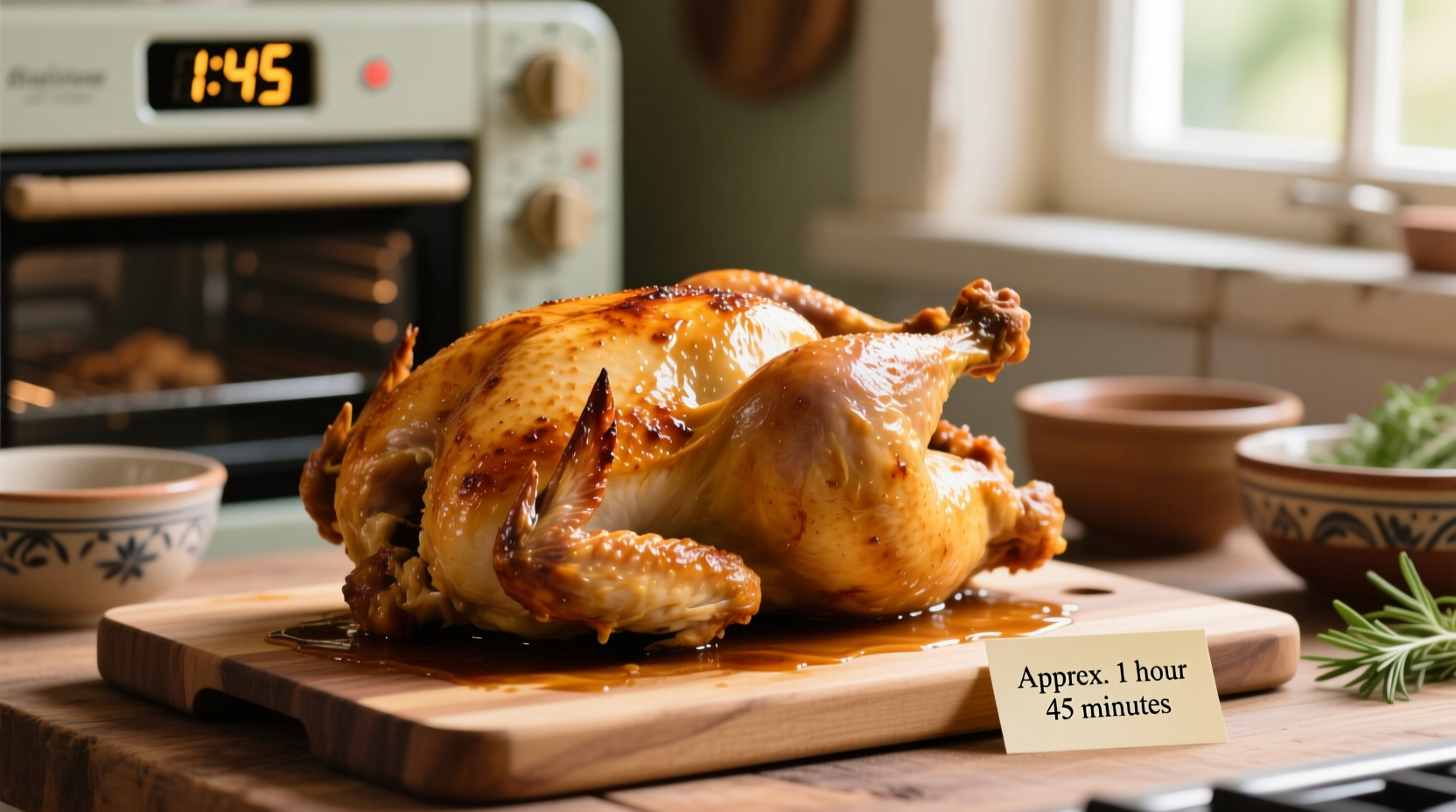Nothing ruins a special meal like an undercooked or overdone roast. Getting the timing right requires understanding multiple factors that affect cooking duration. This guide provides precise, science-backed timing information so you can serve perfectly cooked roasts every time—no guesswork needed.
Why Roast Cooking Time Isn't One-Size-Fits-All
Many home cooks make the mistake of following a single "roast cooking time" formula, only to end up with disappointing results. The reality is that cooking time depends on four critical variables:
- Meat type (beef, pork, lamb, or poultry)
- Weight and thickness of your specific roast
- Oven temperature you're using
- Desired doneness level (rare, medium, well-done)
Understanding these variables prevents the common pitfalls that lead to dry, tough, or unsafe meat. Let's break down exactly how each factor affects your roast's cooking time.
How Meat Type Determines Cooking Duration
Different meats have unique muscle structures and fat distributions that affect heat transfer. This explains why a 3-pound beef roast needs different timing than a 3-pound pork roast.
| Meat Type | Recommended Oven Temp | Time Per Pound | Safe Internal Temp |
|---|---|---|---|
| Beef (ribeye, sirloin) | 325°F (165°C) | 15-20 minutes | 130-145°F (rare-medium) |
| Pork (loin, shoulder) | 325°F (165°C) | 20-25 minutes | 145°F + 3 min rest |
| Lamb (leg, shoulder) | 325°F (165°C) | 15-20 minutes | 140-145°F (medium-rare) |
| Chicken/Turkey | 350°F (175°C) | 20 min/lb + 20 min | 165°F in breast |
These guidelines come from the USDA Food Safety and Inspection Service, which maintains strict standards for safe cooking temperatures. Note that these times assume you're starting with meat at refrigerator temperature (40°F or below).
The Critical Role of Internal Temperature

Time alone shouldn't determine when your roast is done. Internal temperature is the only reliable indicator of doneness and safety. Modern food science has established precise temperature ranges for both safety and optimal texture:
- Beef and lamb: 120-125°F for rare, 130-135°F for medium-rare, 140-145°F for medium
- Pork: 145°F with 3-minute rest time (USDA updated this guideline in 2011, moving from the previous 160°F standard)
- Poultry: 165°F throughout for safety
Professional chefs universally agree that a quality instant-read thermometer is essential. As Harold McGee explains in On Food and Cooking, "The thermometer ends the guesswork and gives you control over the cooking process."
Altitude Adjustments for Perfect Roast Timing
If you live at high elevations (above 3,000 feet), standard cooking times won't apply. Water boils at lower temperatures as altitude increases, which affects how heat transfers through your roast:
- 3,000-5,000 feet: Add 5-10% to cooking time
- 5,000-7,000 feet: Add 10-15% to cooking time
- 7,000+ feet: Add 15-25% to cooking time
This information comes from Colorado State University's extension program on high-altitude cooking, which provides science-based adjustments for various cooking methods.
Step-by-Step Roast Cooking Timeline
Follow this sequence for perfect results every time:
- Preparation (30-60 min before cooking): Remove roast from refrigerator, season, and let come toward room temperature
- Preheating: Heat oven to specified temperature (typically 325-350°F)
- Cooking: Place roast in oven and set timer based on weight and meat type
- Monitoring: Check internal temperature 15-20 minutes before expected finish time
- Resting: Remove roast when 5-10°F below target temperature (carryover cooking will raise it)
- Rest period: Let roast rest 15-30 minutes (15 min for small roasts, 30 min for large)
The resting phase is crucial—this allows juices to redistribute. Cutting too soon causes valuable juices to escape, resulting in dry meat. During this time, the internal temperature typically rises 5-10°F due to residual heat.
Common Timing Mistakes and How to Fix Them
Even experienced cooks sometimes miscalculate roast cooking time. Here's how to handle common issues:
- Roast cooking too fast: Lower oven temperature by 25°F and monitor closely with thermometer
- Roast cooking too slow: Increase temperature by 25°F but don't exceed 375°F to avoid exterior overcooking
- Uneven cooking: Rotate roast 180 degrees halfway through cooking time
- Unexpected guests arriving early: Remove roast when 10-15°F below target, cover loosely with foil, and let rest longer
When Time Alone Isn't Enough: Essential Verification Methods
While timing guidelines provide a starting point, always verify doneness using multiple methods:
- Thermometer check: Insert into thickest part, avoiding bone or fat
- Touch test: Compare firmness to different parts of your hand (palm for rare, base of thumb for medium)
- Juice color: Clear or slightly pink juices indicate proper doneness for most meats
- Meat fiber separation: Properly cooked meat will show slight separation between muscle fibers
Remember that carryover cooking continues after removal from the oven. For large roasts (over 5 pounds), this can mean a 10-15°F temperature increase during resting. Planning for this prevents overcooking.
Practical Roast Timing Calculator
For quick reference, here's a simple formula to calculate approximate cooking time:
Beef/Lamb: (Weight in pounds × 17) + 15 minutes
Pork: (Weight in pounds × 22) + 10 minutes
Chicken: (Weight in pounds × 20) + 20 minutes
This calculator provides a starting point, but always verify with a thermometer. Factors like oven accuracy, meat starting temperature, and roast shape affect actual cooking time.











 浙公网安备
33010002000092号
浙公网安备
33010002000092号 浙B2-20120091-4
浙B2-20120091-4